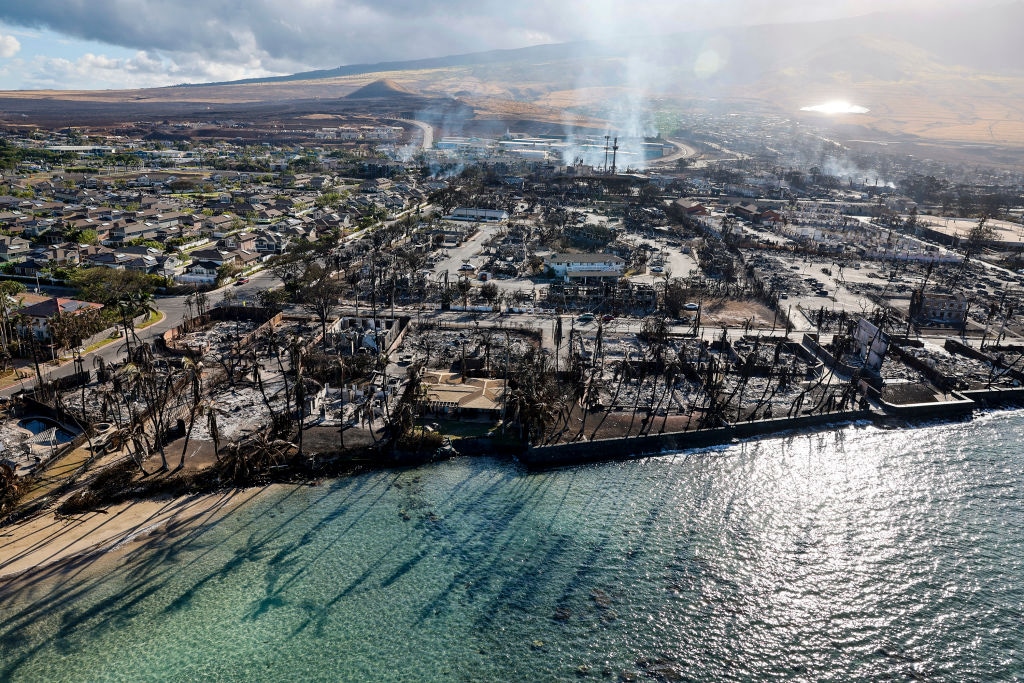This post was originally published on Eco Watch
In a lawsuit over the Maui wildfires of August 2023, Hawaiian Electric and other defendants have tentatively agreed to a settlement of more than $4 billion.
The proposed deal, which has not yet received final approval, would settle the lawsuits of thousands of businesses and homeowners against the island’s utility, Hawaiian Electric, said people familiar with the agreement who were not authorized to speak about it publicly, Bloomberg reported.
The devastating wildfires killed 102 people, damaged or demolished 2,207 structures — most of them residential — and caused approximately $5.5 billion in damages.
Other defendants in the lawsuit include the state of Hawaii, Charter Communications and Maui County, reported Honolulu Civil Beat.
On July 9, a committee of Maui County Council members passed a resolution to authorize the approval of a global settlement, with a vote by the full council on whether to adopt it scheduled for Friday.
“There are discussions, but to my knowledge, nothing’s happened,” said Rick Fried, an attorney for Maui County, as Honolulu Civil Beat reported.
Someone familiar with the talks commented, “It’s not a done deal. The situation is very much in flux.”
There are nearly 500 lawsuits pending with thousands of potential plaintiffs, but it is unknown where they stand with regards to the proposed agreement.
A complication is that insurers have paid billions in wildfire claims worldwide, for which they have filed for reimbursement.
Bloomberg said lawyers for the insurance industry are seeking $2 billion in reimbursement from the settlement for claims previously paid, according to the anonymous sources. In response, an offer was made by plaintiffs for $600 million, but it wasn’t known if it had been accepted by the insurers.
Shares of Hawaiian Electric rose by up to 43 percent on Friday, the highest since August of last year.
It remained unclear how the settlement’s liability would be divided between the governments and companies, according to the anonymous sources. They said Hawaiian Electric was liable for roughly $1.5 billion, but the shares of other companies were still in the process of being finalized. Some sources said the proposed settlement would be paid over a span of four years, reported Bloomberg.
The amount that would be paid from the settlement to homeowners and businesses was also still unknown.
The tentative agreement was reached through mediation sessions ordered by the court, but the judge had yet to sign off on it.
Hawaiian Electric was lambasted for not turning off power in the face of warnings of gale-force, dry winds settling the stage for critical fire conditions in August of 2023.
Since the disaster, the power company’s credit has been reduced to “junk,” limiting its ability to raise capital and causing a loss of over half its market value.
The utility acknowledged that electric power lines were downed and power poles snapped by the intense winds, which caused a small fire near Lahaina on August 8. But executives for Hawaiian Electric said the blaze was extinguished by firefighters, who left the site. That afternoon, a fire flared up there after the electric company had shut off power.
The county sued the power company, saying it had not properly prepared equipment for the possibility of wildfires. Hawaiian Electric’s countersuit put the blame on the county.
County officials declined to disclose the deal’s amount, but local news reports said they were open to “a negotiated settlement,” as Bloomberg reported.
The post Hawaiian Electric and Other Defendants Reach Tentative $4 Billion Maui Wildfire Settlement appeared first on EcoWatch.





0 Comments